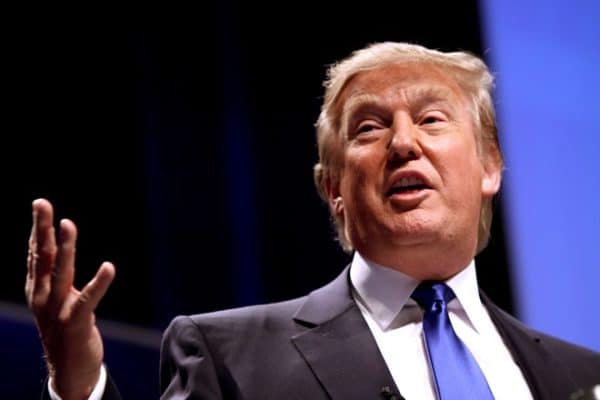
 It’s not really a revelation, but US President Donald Trump has a strange and skewed perspective, in this case on NAFTA and how it impacts the job market in the United States.
It’s not really a revelation, but US President Donald Trump has a strange and skewed perspective, in this case on NAFTA and how it impacts the job market in the United States.
Why has the US middle been bled of all those traditional blue collar manufacturing jobs? Bad trade agreements aren’t to blame, modernization and currency fluctuations are. And neither of these are about to change anytime soon, even if NAFTA gets a makeover.
Prime Minister Justin Trudeau is in Washington this week hoping to drum up support for salvaging the 23-year-old North American Free Trade Agreement between Canada, the US and Mexico. The PM has met with members of the US House of Representatives’ ways and means subcommittee on trade and, of course, with Mr. Trump, who was heard musing on NAFTA in his characteristically idiot-syncratic way, saying, “I happen to think that NAFTA will have to be terminated if we’re going to make it good.” “Otherwise, I believe you can’t negotiate a good deal,” Trump said.
Donald Trump called NAFTA “the worst trade deal ever…”
Famously, the President has called NAFTA “the worst trade deal ever,” and while opposition to trade agreements seems to rule the day right now in Washington, aside from a few outliers, much of the rhetoric is wrongheaded about why the US is no longer the employment powerhouse in manufacturing it once was.
First, modernization is to blame, not trade deals. Since the 1970s, the United States has lost two-thirds of its manufacturing employment, a shocking state of affairs, to be sure, but not out of keeping with other countries in the industrialized world. Take Germany, for instance, the paradigm of manufacturing and exporting power in Europe: manufacturing jobs are down 50 per cent since 1970, lost not to poor economic planning or to bad trade deals but to automation and dramatic increases in productivity.
On modernization, Brad DeLong, chief economist at the Blum Center for Developing Economies at UC Berkeley says “Even the best policies favourable to nurturing a country’s manufacturing sector would not have prevented this process of the shedding of relatively inefficient manufacturing jobs.”
“The trend preceded NAFTA, and it would have continued with or without NAFTA,” DeLong says.
Second, cost differentials combined with globalization have pushed manufacturing out of countries like the United States. Here is Dennis Mitchell, former senior portfolio manager for Sprott Asset Management, to explain.
“Much of the job migration [from the US] has really been tied to currency fluctuations,” says Mitchell, in conversation with BNN Wednesday. “When NAFTA was originally signed, the peso was 4 to 1 to the US dollar and it’s now close to 18 to 1. So, you talk about investing US dollars into Mexico, the offset to that is productivity improvements: is the US worker that much more productive than the average Mexican worker to offset the different cost? It’s really difficult to overcome that gap.”
Mitchell says that the way for countries like Canada and the US to combat employment leakage is not by focusing on trying to get a better deal out of trade agreements but to retrain and reorient their workforces to be more in line with modern realities.
“If you have a lot of lower or blue-collar jobs that are moving away to lower cost jurisdictions, you’ve gotta find a way to steer your populace towards higher post-secondary education so they can be part of the knowledge economy,” says Mitchell.
Granted, trade agreements like NAFTA can be always improved (updates to its environmental standards and rules around telecommunications and e-commerce would help). But worrying about NAFTA instead of addressing modern employment realities, now there’s the really bad deal.
Leave a Reply
You must be logged in to post a comment.




 Share
Share Tweet
Tweet Share
Share




Comment